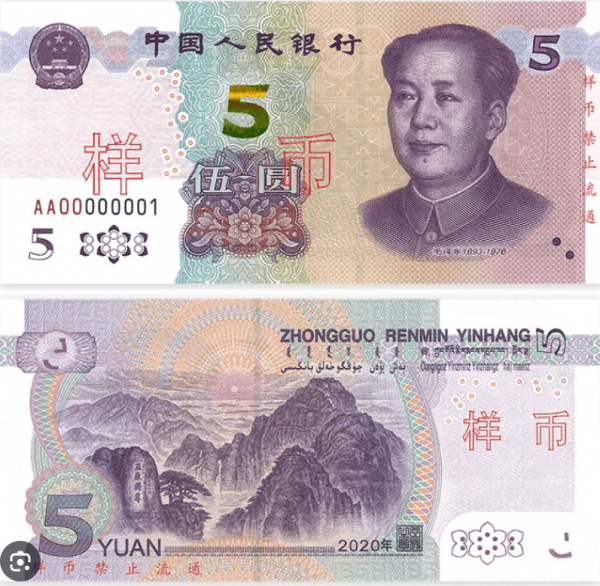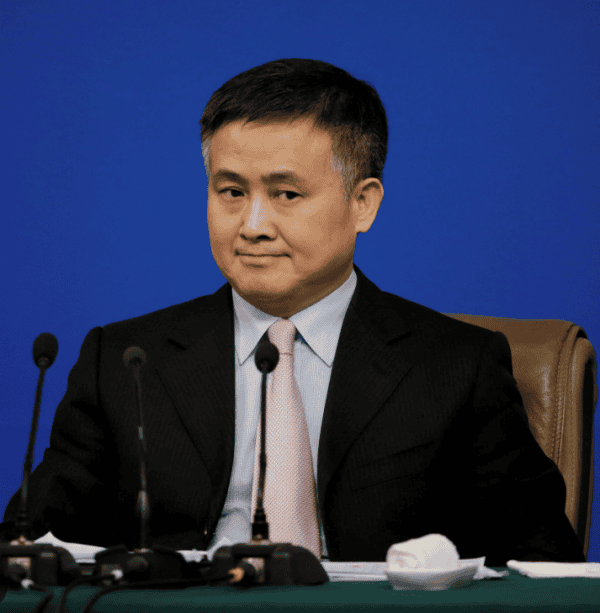China manipulates its currency, specifically the exchange rate between US dollars and the Chinese yuan/renminbi. They do it purposely and the whole world knows it though it appears the freaking global media does not understand it even minimally.
Allow me to explain it.
Wait, first, what exactly is the Chinese currency, Big Red Car? Yuan or renminbi?
Ahhh, dear reader, you’re confused, but so is everybody else.
1. The Chinese yuan is the currency of China and is referred to as CNY. I think of it as the “Chinese national yuan” which is the denominatiuon of the currency. There is also a digital e-CNY that can only be owned by Chinese citizens.
2. The Chinese renminbi is the money system of China and is referred to as RMB.
An easy way to remember the difference is to compare it to the English pound sterling. English “sterling” is the monetary system and the pound is the denomination of the currency.
Sterling = renminbi
Pound = yuan
So, you can refer to Chinese currency for purposes of this discussion as any of the yuan or renminbi or CNY or RMB. It’s all the same.
It is important to note that the Chinese currency is one of the 5 most important currencies in the world: US dollar, EU dollar, Japanese yen, British pound, and the Chinese yuan. This is based on the volume of trade internally and externally.
Who runs the show on the Chinese currency, Big Red Car?
The People’s Bank of China — the equivalent of the US Federal Reserve, both central banks of sovereign nations — holds the whip hand in regard to monetary policy, interest rates, and currency, just like the US Federal Reserve.
Whilst the US Federal Reserve is completely independent of the US government and the White House, the PBOC — like everything in China — is under the control of Chairman Xi.
It’s a bloody Communist nation for goodness sake and Chairman Xi has consolidated more power than Mao ever dreamed of holding. So, who really controls things in regard to currency in China? The bloody Commies and Chairman Xi, in particular.
The US Federal Reserve has a dozen regional offices and a Board of Governors and has private sector involvement at the board level whilst the People’s Bank of China is just a faceless, black hole of a government institution. Very meaningful differences.
Both the US Federal Reserve and the PBOC (People’s Bank of China) have gigantic balance sheets with which to calm markets and act as a huuuuuuuge shock absorber in the event of an unwelcome ripple running through the currency markets. When you hear about the Chinese holding $3.5T in US dollars, they are holding that in the PBOC in the form of US Treauries, US agency debt (bonds), other security instruments, and cash that is invested overnight.
How they — the US Federal Reserve and the People’s Bank of China — do their job comparatively is substantially different, but as noted above the PBOC has to deal with China’s Communist leaders.
Who runs the bloody PBOC, Big Red Car?
The Governor of the People’s Bank of China is one Pan Gongsheng. He is also the Secretary (senior position) of the Communist Party of China’s People’s Bank of China Committee.
They’re not putting much perfume on it, eh, amigos.
What exactly do they do to manipulate their currency, Big Red Car?
As part of their monetary policy, the PBOC sets a mid-point target in the USD v Chinese yuan exchange rate. The policy of the PBOC is to “intervene” if market forces drive that exchange rate above or below a 2% band centered on that mid-point.
This is often referred to as a “peg,” a specifically set rate of exhange and this is why people are wont to say, “The Chinese yuan is pegged to the US dollar.”
What do they do to intervene, Big Red Car?
It’s very simple:
1. If the yuan should begin to dip below that 2% band, the PBOC will use its massive balance sheet and US currency holdings to BUY Chinese yuan thereby increasing the demand and driving the price of the Chinese yuan back up.
2. If the yuan should rise in strength against the US dollar, the PBOC will “flood the market” by issuing government debt to reduce the strength of the Chinese yuan and drive the price of the Chinese yuan back down.
These actions are completely computerized and set on hair triggers, but they may require massive amounts of US dollars to be able to work smoothly as the market in UST is $1.05T daily.
This is why the Chinese hold such massive US dollar holdings in the form of US Treasuries and other securities denominated in USD.
Any other wrinkles, Big Red Car?
Yes, dear reader.
1. The Chinese have an open bias toward a “weak” yuan which allows them to sell more goods produced in China into foreign markets, particularly the United States. In reality, the yuan is likely twice as strong versus the US dollar as exchange rates indicate.
If the Chinese allowed the yuan to float to its actual value, exports would likely be reduced by as much as 50% based solely on supply v demand and pricing equilibrium. If prices go up, demand will dampen.
2. We can tell the Chinese exhibit and create this bias by engaging in a PPP analysis — Purchasing Power Parity — wherein a basket of identical goods is priced in two countries and the cost is compared. If the comparison is fair, then the currency exchange rate should be close to the comparison of the relative costs.
3. In the instance of the US and China, the market driven exchange rate is about twice the PPP calculated exchange rate proving the Chinese are artificially manipulating their currency to be cheaper and thus allowing China a better price point from which to export goods manufactured in China to other countries like the United States.
4. In the past, the Chinese have conducted massive devaluations of their currency to effectively “reset” the value of the yuan. This has been purely political. It is also a way to mark inflation to the market.
5. As a Communist country, a supporter of Russia in all its wickedness, a supporter of Russia’s Ukraine war, an ally with Russia, North Korea, and Iran, and the threatened invader of peaceful Taiwan, China is no altar boy and the market emotion associated with war would absolutely devastate the Chinese economy.
Bottom line it, Big Red Car
We know the Chinese are cheaters, always have been, and always will be so finding out they manipulate their currency by interfering directly in currency markets is no surprise, is it? No surprise they want their currency to be cheap to sell more goods overseas.
The reason the Chinese have such huuuuuuge holdings of USD denominated holdings is because they need that massive balance sheet in USD to intervene in the currency market when the yuan is weak.
One also gets a sense for how a devastating trade war based on exports/imports and tariffs could immensely damage China and destroy the Chines yuan v US dollar peg.
This is why the Chinese sent their #2 guy to Switzerland to meet for three long and intense days with the US Secretary of the Treasury and the US Trade Representative.
But, hey, what the Hell do I really know anyway? I’m just a Big Red Car.


